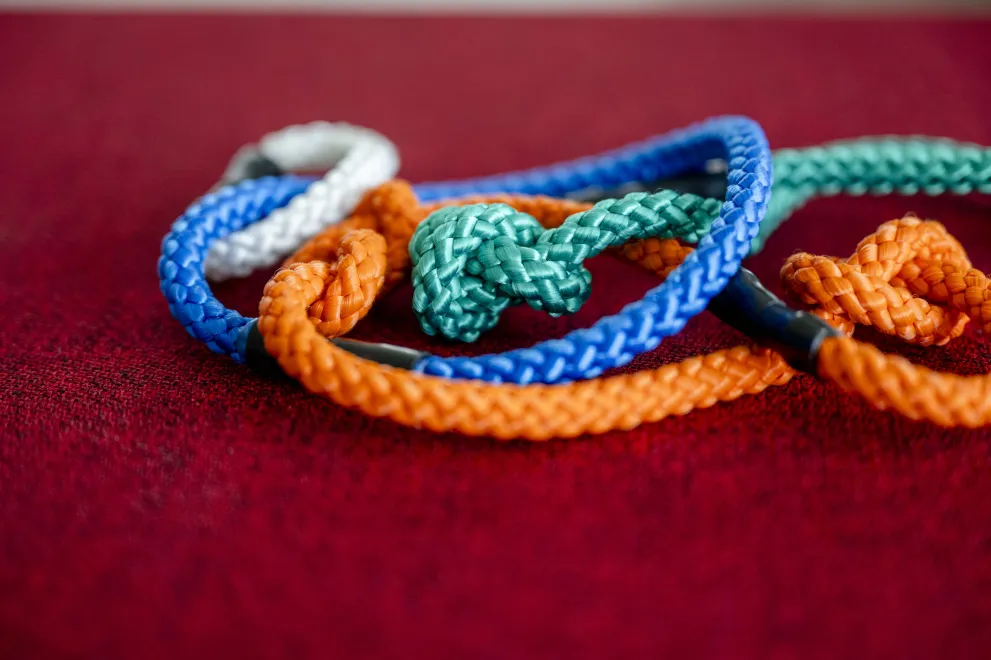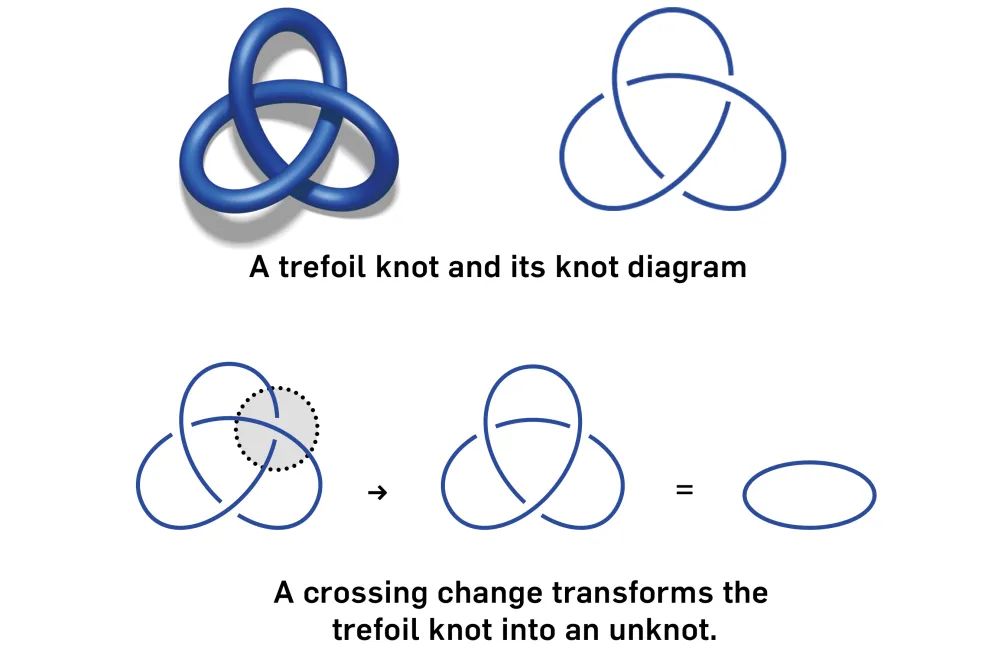Claudius Zibrowius is Professor of Low-Dimensional Topology at Ruhr University Bochum.

ERC Starting Grant 2024
How to Solve Mathematical Knots
With funding from the ERC Starting Grant CAPCAM, Claudius Zibrowius wants to mathematically prove the so-called cosmetic crossing conjecture.
Knots are interesting objects from a mathematical point of view. Topological research explores how they can be classified and how different knots can be converted into one another. This is also, broadly speaking, the focus of Professor Dr. Claudius Zibrowius’ ERC grant “Cut-and-paste conjectures and multicurves” (CAPCAM).
A knot consists of a length of rope with its ends glued together. In mathematical terms, such objects are modeled as so-called embeddings from a circle into three-dimensional real space. As knots are difficult to describe using formulas, mathematicians use so-called knot diagrams. For this purpose, they project knots onto a two-dimensional surface – as if they were drawing the shadow cast by a knotted rope on a sheet of paper. At the points where two rope strands cross, the diagram shows which strand is at the top and which is at the bottom.
If the strands are swapped at such a point, i.e. one strand is pushed through the other, the knot described by the diagram will usually change. This can also result in a completely unknotted object, the so-called unknot.

In order to compare knots with each other, researchers look for invariants, i.e. properties that don’t change when a knot is deformed. For example, the unknot can border a circular disk, while the trefoil knot doesn’t have this property. The trefoil knot can therefore not be deformed into the unknot. The two knots are fundamentally different.
In his research project, Claudius Zibrowius examines, among other things, the so-called cosmetic crossing conjecture. Put simply, the conjecture asserts that a crossing change of a knot will always change the oriented knot type unless there is an obvious reason for why it doesn’t. However, mathematical proof of this has yet to be provided. Claudius Zibrowius hopes that his ERC project will help to do just that.
The starting grant amounts to 1.4 million euros. The project starts in 2024.
